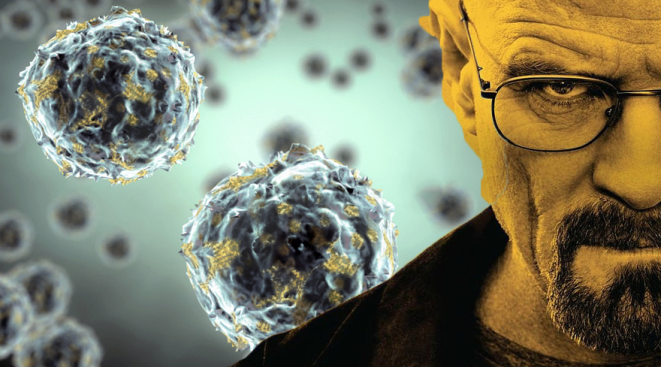Imlygic, a first-of-its-kind oncolytic immunotherapy for the treatment of melanoma

Last Updated on November 8, 2015 by Joseph Gut – thasso
November 06, 2015 – Just about the same time at the End of October 2015, the American Drug and Food Administration (FDA) has approved, and the European Medicines Agency (EMA) has recommended for approval Talimogene Laherparepvec (Imlygic), a first-in-class advanced therapy medicinal product (ATMP) derived from a virus, that has been genetically engineered to infect and kill cancer cells (oncolytic virus). The indication for Talimogene Laherparepvec (Imlygic) is the treatment of adults with unresectable melanoma that is regionally or distantly metastatic (Stage IIIB, IIIC and IVM1a) with no bone, brain, lung or other visceral disease. Talimogene Laherparepvec (Imlygic) has not been shown to improve overall survival or to have an effect on melanoma that has spread to the brain, bone, liver, lungs, or other internal organs.
Melanoma is the most aggressive form of skin cancer and the leading cause of death from skin disease. The main risk factor for developing melanoma is ultraviolet (UV) light and unprotected sun exposure. In 2012 more than 100,000 Europeans were diagnosed with melanoma and it is estimated that around 22,200 have died from the disease. Likewise, according to the National Cancer Institute approximately 74,000 Americans will be diagnosed with melanoma and nearly 10,000 will

die from the disease in 2015. If melanoma is localised and detected early, it can often be removed by surgery and patients have a very good chance of survival. However, patients with melanoma that has spread have a poor prognosis. For decades, standard chemotherapy was the only available treatment for these patients. In the last three years, the authorisation of targeted treatments, including immunotherapies, BRAF V600 inhibitors and MEK inhibitors, have changed the therapeutic landscape and increasingly benefited patients. However, there is still an important need for new treatments with acceptable safety profiles to continue to improve the outlook for patients with this serious life-threatening disease.
Talimogene Laherparepvec (Imlygic), also called T-VEC for short, is derived from a virus (herpex simplex virus-1) that has been genetically engineered to infect and replicate (make copies of itself) within cancer cells and to produce the protein granulocyte-macrophage colony-stimulating factor (GM-CSF). It is thought to work in two ways: it enters the tumour cell and uses the cell’s energy stores to replicate, eventually overwhelming the cell and causing it to die. By producing the protein GM-CSF it also stimulates the patient’s immune system to recognise and destroy tumour cells. Once an infected tumour cell dies, copies of the virus are released into the patient’s bloodstream to infect more tumour cells. Although Imlygic can enter healthy cells, it is not able to replicate in these healthy cells and so it does not kill them.
Talimogene Laherparepvec (Imlygic) is recommended to be injected directly into the melanoma lesions. The efficacy of Talimogene Laherparepvec (Imlygic) compared with injecting GM-CSF under the skin, was assessed in one randomised controlled trial in adults with unresectable (cannot be removed by surgery) regionally or distantly metastatic melanoma. The study enrolled 436 patients and the efficacy of 295 patients treated with Imlygic was compared with 141 patients treated with GM-CSF. Analysis of the subset of patients in the study whose disease had not spread to the lung or other internal organs (249 patients with stage IIIB, IIIC and IVM1a disease) showed a benefit in patients treated with Talimogene Laherparepvec (Imlygic) compared with patients treated with GM-CSF: 25% of those patients treated with Talimogene Laherparepvec (Imlygic) responded positively (durable response) compared with 1% of those patients treated with GM-CSF. A durable response was defined as disappearance of the tumours or at least 50% reduction of tumours lasting at least six months until patients’ health declined or they required subsequent therapy. Exploratory analysis in these patients suggested improvements in survival in patients treated with Talimogene Laherparepvec (Imlygic), however this is not yet fully clear. Talimogene Laherparepvec (Imlygic) has also not been compared with other recently approved medicines for melanoma, which have shown beneficial effects on survival.
A treatment course with Talimogene Laherparepvec (Imlygic) consists of a series of injections into the melanoma lesions. After the initial injection, a second dose is administered three weeks later, followed by additional doses every two weeks for at least six months, unless other treatment is required or until there are no remaining injectable lesions to treat.
There are side effects too. So far, the most common side effects observed in clinical study participants were fatigue, chills, fever, nausea, flu-like symptoms and pain at the injection site. Because Talimogene Laherparepvec (Imlygic) is a modified live oncolytic herpes virus therapy, herpes virus infection can also occur. Given this, Talimogene Laherparepvec (Imlygic) should not be given to individuals with suppressed immune systems or who are pregnant.
See here a first comment on the arrival of Talimogene Laherparepvec (Imlygic):
(

